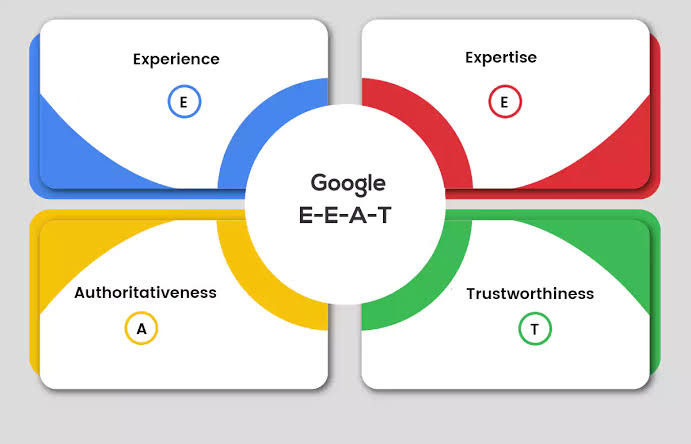
Stop Chasing Algorithms: Google E-E-A-T Is The Real SEO Hero
Boost SEO success with Google E-E-A-T, trust signals, and content quality. Learn the secrets every SEO strategy needs to master!
Table of Contents
- Introduction: Why Google E-E-A-T Is the Talk of SEO Town
- What Exactly Is Google E-E-A-T?
- How Google E-E-A-T Impacts Search Rankings
- How to Improve Google E-E-A-T for SEO
- Creating Expert Content for SEO Success
- Final Thoughts: Build Authority, Build Visibility
Introduction: Why Google E-E-A-T Is The Talk Of SEO Town

Let’s get real — keyword stuffing and shady backlinks are no longer enough. Today, Google’s evolving algorithm prioritises content quality, trust signals, and user experience over hacks. And at the core of this evolution? Google E-E-A-T. If you want to boost your SEO strategy, it’s no longer a nice-to-have; it’s a need-to-nail.
This blog is your no-fluff, strategy-packed guide to mastering it.
What Exactly Is Google E-E-A-T?
Google E-E-A-T stands for Experience, Expertise, Authoritativeness, and Trustworthiness. It’s a core framework used by Google’s search quality raters to assess the quality of content, especially in YMYL (Your Money Your Life) niches like health, finance, and legal content.
But it’s not just for regulated industries — even beauty blogs or tech reviews need strong trust signals and expert content to rank. If you’re producing shallow, generic content without showing real knowledge or credentials, you’re losing the search rankings game before it even begins.
How Google E-E-A-T Impacts Search Rankings
Let’s connect the dots between Google E-E-A-T and SEO strategy success:
- Experience: Have you “been there, done that”? First-hand knowledge builds authenticity.
- Expertise: Your author should be a legit expert — not just a content writer paraphrasing from top-ranking pages.
- Authoritativeness: Are other websites linking to you as a reference? That’s the gold Google loves.
- Trustworthiness: HTTPS, transparency, updated content, citations, and no misleading ads all contribute to trust.
Websites that build these pillars organically have seen significant boosts in search rankings, especially after Google’s Helpful Content and Core Updates.
How To Improve Google E-E-A-T For SEO
Now comes the “how.” Here’s how you can align your website with Google’s expectations:
Showcase Author Bio and Credentials
Include your content creator’s bio with relevant experience and qualifications. This especially matters if you’re targeting long-tail keywords.
Create High-Value, First-Hand Content
Don’t regurgitate. Share case studies, unique insights, data, or lived experiences. That’s what builds content quality and expert content for SEO success.
Strengthen Your Site’s Technical and Social Proof
Ensure your website has HTTPS, proper contact pages, customer reviews, and is linked from other reputable sites. These subtle signals scream “Trust me!” to Google.
Creating Expert Content For SEO Success
Expert content isn’t about sounding smart — it’s about adding value. When you aim to rank for terms like ways to increase authoritativeness in content or why E-E-A-T matters for Google rankings, you need more than opinions.
Start by integrating:
- Industry research
- Client testimonials
- Original interviews
- External citations to reputable sources
These elevate your trust signals and clearly differentiate you from competitors relying on AI-spun fluff. A well-rounded SEO strategy that emphasises Google E-E-A-T helps build long-term ranking power.
Final Thoughts: Build Authority, Build Visibility
Here’s the truth — Google is tired of SEO “hacks.” It’s now rewarding authenticity, authority, and usefulness. That’s why Google E-E-A-T is your brand’s SEO backbone, not just a buzzword.
Whether you’re running a beauty blog, a SaaS product site, or an eCommerce store, the same principle applies: trust wins rankings. So, double down on content quality, build expert-driven content, and stay transparent.
CTA-Rich Conclusion: Let’s Build Google E-E-A-T Together
Ready to rise in search rankings and actually stay there? Start by applying the principles of Google E-E-A-T in every piece of content you publish.





